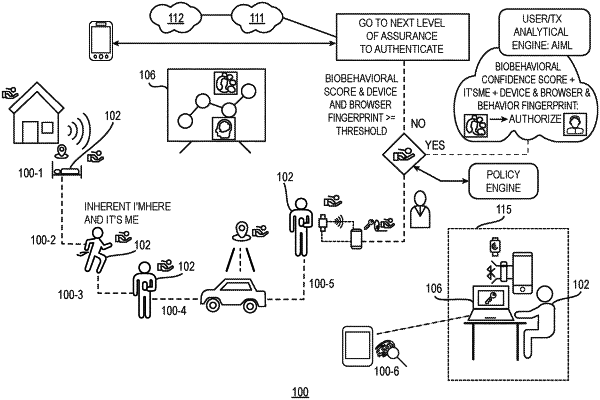| CPC H04W 12/065 (2021.01) [G06N 20/00 (2019.01); H04L 63/08 (2013.01); G06Q 20/40145 (2013.01); G06Q 20/4016 (2013.01); G06Q 40/02 (2013.01)] | 17 Claims |

|
1. A system for monitoring a secure network comprising:
a first plurality of hardware processors having artificial intelligence machine learning (AI/ML) capabilities forming a smart data hub and a second plurality of hardware processors forming a risk engine, wherein both the smart data hub and risk engine are coupled to a network interface, the first and second plurality of hardware processors configured to:
continuously capture contextual and behavioral factors of a user entity at the smart data hub to develop a bio-behavioral model of the user entity through machine learning;
receive a transaction request from a relying party server at the risk engine;
contact a user entity device to collect contextual and behavioral data of the user entity from the user entity device;
receive the contextual and behavioral data of the user entity at the risk engine;
send the contextual and behavioral data of the user entity to the smart data hub;
retrieve a bio-behavioral model of the user entity and update with the contextual and behavioral data of the user entity to form an updated bio-behavioral model of the user entity;
compare allocentric and egocentric factors of the transaction request with the updated bio-behavioral model of the user entity to determine the level of abnormalities associated with the transaction request and determine a risk score;
send the risk score back to the risk engine to determine whether to approve the transaction request; and
wherein the risk engine monitors decay of the risk score over time during an active session to determine whether the active session should continue.
|